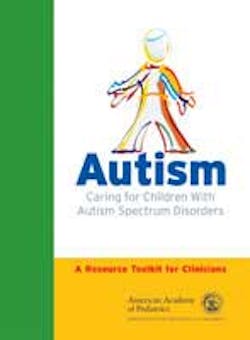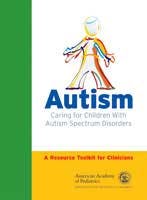Autism spectrum disorder (ASD); New dental X-ray recommendations
Autism is much more prevalent than most would think. One out of six children is identified with a developmental disorder and/or behavioral problem, and approximately 1 in 88 children are diagnosed with an autism spectrum disorder (ASD).(1)
Developmental disorders have subtle signs and may be easily missed. Early signs of autism are often present before 18 months. ASD includes Autistic Disorder, Asperger Syndrome, and PDD (Pervasive Developmental Disorder).
Early identification is key. There is the M-CHAT, is designed to be administered to parents/guardians and interpreted by pediatric providers in the context of developmental surveillance. The online version at M-CHAT.org is approved by the M-CHAT authors.(2) This is a screening tool, and identified children are referred for assessment. Assessment determines the existence of delay or disability which generates a decision regarding intervention. There is a toolkit which was developed to support health care professionals in the identification and ongoing management of children with autism spectrum disorders (ASDs) in the medical home.(3)
As these individuals are often inflexible and have non-functional routines, oral healthcare may be difficult to teach and sustain. Challenges in routine health care due to difficulties with social interaction, communication, and negotiating a new and unfamiliar environment. An average visit requires twice as much time as for a child without an ASD. For strategies in the office to promote familiarity, read Karen Raposa and Dr. Steve Pearlman’s article in this newsletter.
For more information on ASD, visit these websites.(4,5)
On December 1, 2012, the American Psychiatric Association (APA) Board of Trustees approved the final diagnostic criteria for the fifth edition of the Diagnostic and Statistical Manual of Mental Disorders (DSM-5).(6)
The fear of stigma and discrimination can have a devastating effect on those living with mental illness.(7) Educate yourself and learn how to deal with patients with mental illnesses and developmental disorders.
Since 1989, the ADA has recommended the ALARA principle in relation to dental X-rays—that radiation exposure to patients is “as low as reasonably achievable.”
Changes to the recommendations include:
• Updates to patient shielding recommendations
• Addition of a new section on limiting radiation exposure during radiographic examinations
• Including new topics such as receptor selection, handheld X-ray units, technique charts and radiation risk communication(8)
Thank you to all the authors in this newsletter. Happy reading!
References
1. A U T I S M A . L . A . R .M. http://www.medicalhomeinfo.org/downloads/pdfs/AutismAlarm.pdf.
2. https://m-chat.org/.
3. http://www2.aap.org/publiced/autismtoolkit.cfm.
4. www.cdc.gov/autism.
5. www.aap.org/autism.
6. http://www.psych.org/File%20Library/Advocacy%20and%20Newsroom/Press%20Releases/2012%20Releases/12-43-DSM-5-BOT-Vote-News-Release--FINAL--3-.pdf.
7. http://www.bringchange2mind.org/.
8. Dental Radiograph Examinations: Recommendations for Patient Selection and Limiting Radiation Exposure. http://www.ada.org/sections/professionalResources/pdfs/Dental_Radiographic_Examinations_2012.pdf.
Sincerely,
Maria Perno Goldie, RDH, MS
To read previous RDH eVillage FOCUS introductions by Maria Perno Goldie, go to introductions.
To read more about antioxidants, click here.







